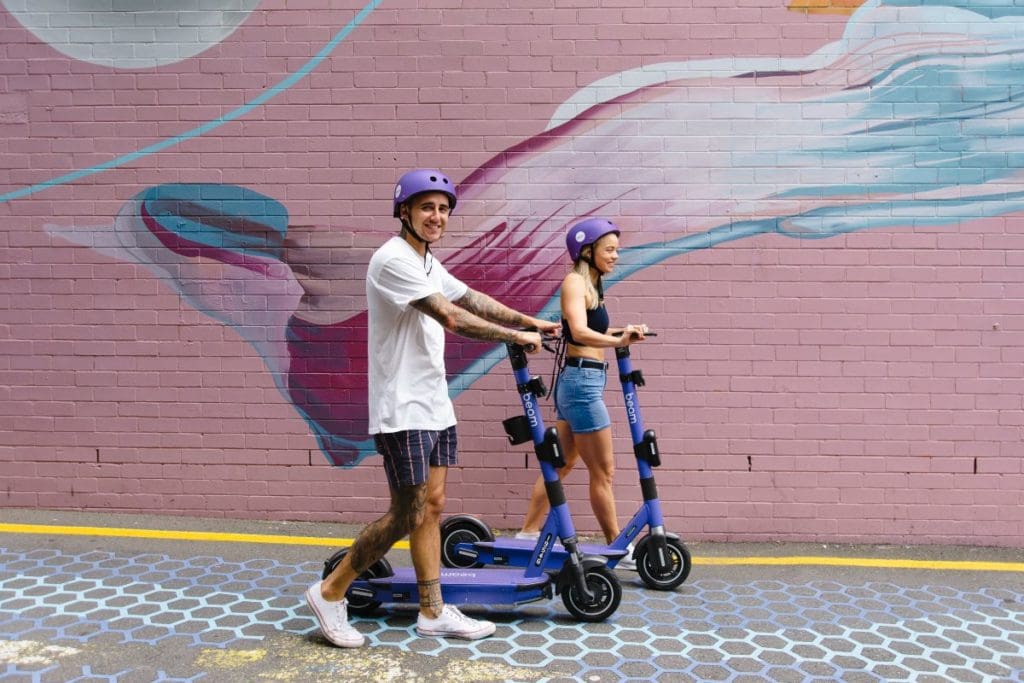10 Tips for New Micromobility Cities

Brisbane, Qld
By Dan Barr, Director of Better Cities Group
As micromobility becomes mainstream in Australia and around the world, cities are starting to see broader value in addition to the transport benefit. Since 2018, Australian smart cities around the country (excluding cities in NSW and Victoria) have been encouraging micromobility operators to provide e-scooter and now, ebike services in their jurisdictions.
Cities’ expectations on providers are now higher as the additional benefits of micromobility are being leveraged. But what is reasonable for cities to expect from providers and what do the cities themselves need to bring to the table?
These questions have led to the development of this list – 10 tips for new micromobility cities.
1. Community Response
Some people love the freedom of a new transport alternative and some people are less than impressed to have e-scooters and ebikes zipping around the city’s footpaths and bikeways. However, the negative reaction appears to be reducing as media and communities have increasingly experienced successful micromobility in cities such as Brisbane, Canberra and Adelaide.
There is certainly less media inquiry into the safety of micromobility which took place in 2018 as this new form of transport was introduced and safety has improved. However, be prepared that whilst many will be supportive, there will be community members and peak bodies in opposition. This needs to be managed in a genuine manner with the best intentions of the community at the forefront.
2. Footpath/Cycle Infrastructure
High-quality footpath, cycle or active travel infrastructure is critical to the successful implementation of a micromobility program. As most States mandate that e-scooters travel on footpaths, rather than roads, it is critical that adequate space and surface quality be provided to support ongoing efforts to grow walking, cycling and micromobility as part of a broader transport strategy.
As micromobility becomes an increasingly important element in the transport choices available to residents and visitors, discussion will begin to occur regarding the allocation of road reserve to different forms of transport. Considering the efficiency of private vehicles versus the alternative of micromobility vehicles, it seems likely that the allocation of space provided to vehicles, public transport, bikes, walking and micromobility deserves review, leading to expansion.
3. Public Realm Allocation
Significant advancements in e-scooter technology and increased rider education has significantly reduced issues around e-scooter or ebike clutter in public space – on footpaths, plaza, parks etc. However, it is still critical to understand how operations will affect the town or city and this will require discussion around having docking or no docking or pushing for virtual docking, which incentivises the return of e-scooters to a geolocated area.
This area can have no physical infrastructure to define it and can be found through the use of the app or can be demarcated through decals, signage or markings. However it should be noted that virtual marking will consolidate e-scooters but restrict distribution.
4. Local Trader Opportunity + Economic Development
The economic development potential of e-scooter hire scheme adoption is becoming better understood, not just at a regional level but also at the street level where e-scooters are generating increased local economic activity. There have been a number of great examples over the last 18 months in Australian cities affected by COVID-19 lockdowns.
The best example is Beam’s ‘Operation Booster’ which is a partner platform to assist local shops, restaurants and cafes. The platform uses a blend of GPS technology, in-app notifications, and product incentives to help stimulate economic activity at the local community level. Beam’s research across many cities in APAC (Asia Pacific) indicates that riders parking outside retailers drives higher footfall and revenue for those businesses, so the simple act of ensuring many more riders start and end their trips outside retailers helps to boost trade.
It should also be noted that the micromobility sector is only around five years old and cities and universities are recognising the opportunity of supporting this emerging sector’s growth through head office retention, staffing and innovation.
5. Reduced Vehicle Use
There is an increasing expectation that micromobility adoption provides a viable alternative to private vehicle use and as such, can be used as a powerful tool to reduce congestion. This is a prevailing theme in a number of the recent expressions of interest from large Australian cities battling to curb congestion, car parking and a growing expectation by segments of the population that they don’t necessarily need to own a private vehicle to have transport choice.
A number of cities have reported a reduction in car parking required in the inner city following the adoption of micromobility programs. This opens discussion about the requirement for new developments to provide as much on-site car parking if they were to consider the inclusion of micromobility and other forms of on-demand electric vehicles within their developments.
6. Social Benefit
There is a growing understanding of the role that micromobility can play in access and equity. Micromobility provides the opportunity for reduced transport costs against private motor vehicles, public transport and ride share. There is also discussion occurring regarding the opportunity for lower income earners and areas of social disadvantage to have access to micromobility at reduced rates.
Micromobility is also seen as a critical element in assisting those communities where there is poor public transport connectivity and e-scooters can be used to assist in first and last mile journeys.
7. Provider Experience
Micromobility hire schemes have been operating within the Australian market for three years now. There are a number of providers who have demonstrated their ability to deliver schemes that assist city transportation and city vibrancy whilst ensuring that safety is at the core of their activities.
These providers continue to drive innovation in the sector through improvements to software, hardware, education and operations to meet the growing expectations of government and their communities. The delivery of these schemes goes far beyond having a fleet of e-scooters or ebikes and the maturity of these organisations and their market share in the Australian and New Zealand context is an important consideration.
8. Smart City Contribution
As cities adopt smart city strategies, and truly start to value the use of real time data to improve service delivery, cities are mandating the use of micromobility technology data to assist their operations. This includes trip data associated with time, location, length of trip, speed etc.
The use of this data will support the adoption of digital twins which represents the next frontier as the capital works, assets and operations of cities are increasingly managed through the use of 3D city models.
9. Event Delivery
Events like the Fringe Festival in Adelaide have successfully used e-scooters as part of their event transport strategy. The value of e-scooters for events is that it enables people to arrive from further away without a car and in doing so, increases the ‘last mile’ distance. This reduces traffic management requirements, increases public transport uptake and adds vitality to the event. Other cities are seeing this opportunity and considering how e-scooters can contribute to both the visitor/patron experience and offset traffic impacts.
10. Transport Integration
The adoption of a micromobility hire scheme has to be done within the context of the broader benefits it provides individuals in their total journey. Commonly referred to as Mobility as a Service (MaaS), MaaS is a total mobility solution focused on the individual’s need to get from A to B.
Micromobility, with its ability to link first and last mile destinations and its rich data sources is set to be a fundamental pillar of the ongoing maturity of MaaS. MaaS combines multiple transport modes such as car and ride share, with public transport and now micromobility options and seeks to deliver a seamless user experience with dynamic journey planning and streamlined payment processes.
Summary
As we see above, the expectation of the benefits that micromobility can bring to Australian cities is growing. It has been demonstrated that whilst it will assist cities provide greater transport choice there are many other considerations.
The evolution of micromobility in Australia will continue and the benefits it brings to Australians, our visitors and our cities will only continue to grow.
Join the Conversation:
We’d love to hear your thoughts on the above, especially what you would personally add to this list. Please comment below.

* Dan Barr is the Director of Better Cities Group – a multidisciplinary consultancy dedicated to improving how we design, manage and enjoy our cities. The Better Cities Group has supported the implementation of a number of e-mobility hire schemes around Australia including Brisbane, Canberra and Adelaide.
Better Cities Group can also be found at www.bettercitiesgroup.com and through Linked In
